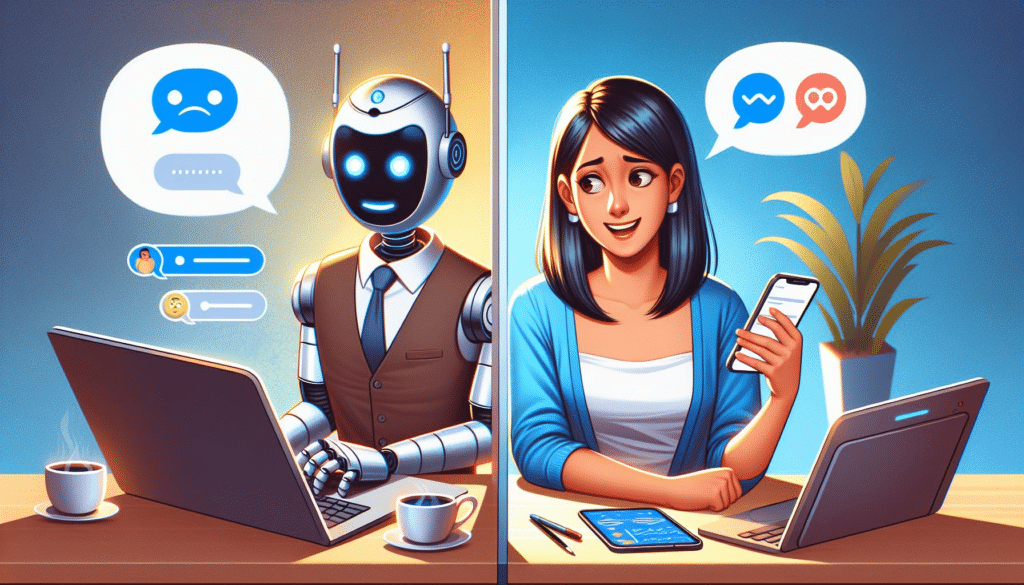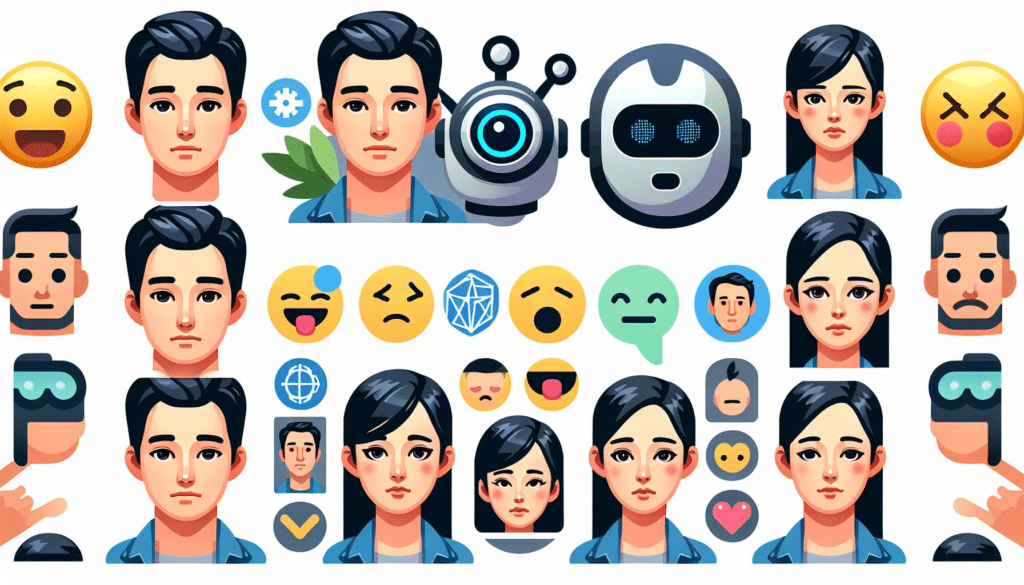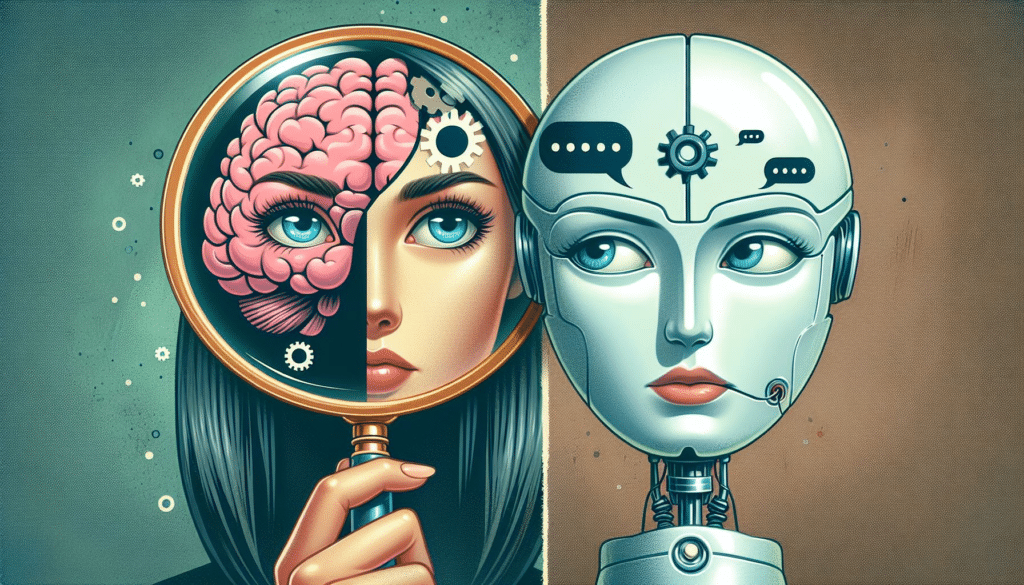The AI humanizer phenomenon marks a revolutionary step in how we experience artificial intelligence (AI) in our daily lives, redefining our interactions with technology. From asking Siri for the weather forecast to engaging with virtual customer service representatives on our favorite shopping sites, we’re witnessing a remarkable transition towards more personable and relatable AI entities. As we find ourselves in the midst of a new era in machine interaction, the focus is shifting towards AI humanizers, which aim to emulate the complexities of human conversation and emotion.
AI Humanizers: Crafting the New Era of Digital Interaction


In earlier times, conversations with AI often felt cold and frustrating due to the technology’s limitations. But with advancements in AI development, our digital interactions are growing in depth and warmth. AI humanizers strive to achieve a delicate balance: they aim to enhance the efficiency of AI while infusing interactions with the nuances of human connection.
By spotlighting AI humanizers from the beginning, we establish their fundamental role in reshaping user experiences and technology’s influence on our lives, paving the way for a deeper exploration of their capabilities, effects, and the intriguing challenge they present when distinguishing between AI-generated and genuine human interactions.
Unlocking the AI Humanizer Toolbox


At the heart of AI humanizers are sophisticated algorithms that decipher and replicate natural language. Embracing emotional recognition software, these technologies can analyze and reflect the subtleties of human expression, aspiring to replicate the empathy and understanding characteristic of human interaction.
Voice modulation and adaptive responses further enhance the human-likeness of these AI systems, moving us past the robotic cadences that once typified machine communication. Through these innovations, AI humanizers are able to facilitate conversations that mimic the ebb and flow of human dialogue, emphasizing the transformative impact of AI humanization in our interaction with technology.
Tools and Platforms to Experience AI Humanization


Chatbots with Personality
Platforms like Replika or Mitsuku offer chatbots designed to learn from your conversations, adapting their responses to mimic the nuances of human emotion and speech patterns. Try engaging in different topics to see how well they can keep up with the conversation’s flow.
Virtual Assistants that Understand You
Beyond Siri and Alexa, there are specialized platforms such as x.ai, which provides AI personal assistants focused on scheduling meetings. Their ability to understand context and negotiate times across emails almost feels like interacting with a human secretary.
Emotional Recognition Games
Affectiva and similar companies have developed platforms that analyze your facial expressions or speech patterns to determine your emotional state. Engaging with these platforms can be an eye-opening experience on how machines understand and react to human emotions.
Are You Smarter Than a Chatbot? Take the Test!


Now for the fun part: can you tell the difference between a well-trained AI humanizer and a real human? Below are several snippets from conversations. Some are from chatbots powered by the latest AI humanization technology, while others are genuine human responses. Test your perception skills and see if you can identify the real person.
Snippet 1:
Person A: “I had the worst day…”
Response: “Oh no! I’m terribly sorry to hear that. Want to talk about what happened?”
Snippet 2:
Person A: “Recommend a good book for me?”
Response: “Absolutely! What genre are you interested in recently?”
Snippet 3:
Person A: “I can’t decide on pizza or sushi for dinner.”
Response: “That’s a tough choice! If you’re looking for something light, sushi might be the way to go.”
Snippet 4:
Person A: “How’s the weather outside?”
Response: “It’s quite sunny today with a slight breeze. A perfect day to be outside!”
Beyond the Test: The Future of AI Humanization


While these games can be entertaining, they also highlight broader implications of AI humanization. This technology could revolutionize customer service, making interactions more pleasant and resolutions faster. In educational contexts, AI tutors could provide more engaging and personalized learning experiences based on the students’ emotional state and learning pace.
However, as we advance, it’s crucial to consider the ethical dimensions and potential drawbacks of this technology. The over-reliance on AI for human interaction poses questions about privacy, data security, and the loss of personal touch in certain aspects of life.
Conclusion
The field of AI humanization continues to evolve, blurring the lines between human and machine interaction in ways previously unimaginable. As we navigate this new territory, the potential benefits are immense—from transforming customer service to creating more captivating educational tools.
Yet, it’s also important to proceed with caution, remaining mindful of the ethical considerations that accompany such advancements. As we look to the future, one thing is clear: the possibilities of AI humanization are as exciting as they are vast, promising a world where technology not only serves us but relates to us in a way that feels genuinely human.
Please note, that the author may have used some AI technology to create the content on this website. But please remember, this is a general disclaimer: the author can’t take the blame for any mistakes or missing info. All the content is aimed to be helpful and informative, but it’s provided ‘as is’ with no promises of being complete, accurate, or current. For more details and the full scope of this disclaimer, check out the disclaimer page on the website.





